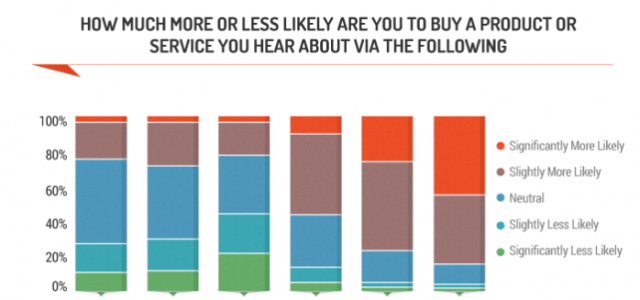Over the last 5 years Digital Transformation has become THE burning focus area for CIOs. IDC predicts that by the end of 2017 two-thirds of G2000 CEOs will have Digital Transformation at the center of their corporate strategy (IDC, 2015).
In most cases, Digital Transformation is considered a change in the company’s strategy towards customer experience and engagement – customer centricity, focus on digital natives and leveraging vast amounts of data to provide personalized support.
However, boards are demanding a greater focus on digital disruption (Weill & Woerner, 2015) – introducing new business models which are hyperpersonalized – catering to the hyperconnected millennials and able to compete with purely digital companies. This push towards disruption as part of the transformation program tremendously complicates an already challenging problem for the CIO. We will discuss three critical areas you need to be prepared for when your CEO and/or board engages in discussions about digital disruption – new business models. In this paper we focus on how to prepare for this eventuality.
Fast
In 2014, Gartner introduced the term Bimodal IT – and very importantly provided guidance on applying mode 2 – the Agile mode – to Systems of Innovation and to some extent Systems of Differentiation.
This strategy is adequate as long as the focus is on improving customer experience and engagement. In addition to the focus on rapidly addressing customer expectations, the strategy also addresses two key business concerns – that of securing the core business model and ensuring the reliability of these core services. In addition, this strategy also helps CIOs introduce agility “safely” into the organization by ring-fencing certain systems – the Systems of Record – to be serviced in the highly “reliable” mode 1 operations.
Unfortunately, this simplistic representation of the enterprise IT landscape and its need to transform does not produce the desired results when business looks at “disruption ” as a core strategy. Disruption according to Christensen (Christensen, Raynor, & McDonald, 2015)
a. Is a process – requires experimentation
b. Often requires building a very different business model
c. Requires you to fail fast and learn from your failures
What this means for the CIO is – disruption is going to require experimentation with core business systems – your Systems of Record – which will now have to run in Mode 2.
Transforming the support and operations of core systems to Agile is an extremely risky endeavor, especially since many of these systems have been in place for a number of years and/or are built on top of proprietary or COTS products – the technologies, capabilities and resources supporting these systems simply are not up to standard and/or maturity to support Agility programs such as Agile (SAFe or SCRUM) or DevOps. It is important to identify such assets and put in place specific programs to address the specific weaknesses each system represents.
One of the techniques to expose the weaknesses of core systems is to formally conduct a facilitated “Innovation and Disruption” workshop which explicitly connects the disruptive ideas to the disruption in the systems. This workshop is a joint event – with participation from business and IT. While its primary goals are for the teams to work on specific business challenges and create a business case for their innovative ideas, an additional goal for the IT team aims to explicitly identify systems which will likely cause a bottleneck in deployment of new business models. Such identification can then result in fast tracking certain programs, training needs and in some cases even reorganization of portfolios. This undertaking, requires a partnership between IT and business, entails a buy-in and understanding that leads to contextualizing and cooperation to make the transition successful.
Big
In 2005, Tim O’Reilly coined the phrase “Data is the Intel Inside” (O’Reilly, 2005). Today more than a decade later, most traditional enterprises have not yet developed the ability the manage enterprise data. Digital transformation is built on top of a bedrock of the ability to collect, analyze and utilize data especially for personalization and to enhance customer engagement. Data becomes absolutely mission critical for the next generation business models – from Uber’s ability to implement dynamic demand based (surge) pricing to recently released non-fee based wealth management from Charles Schwab utilizing robotic advisors.
The next generation business models are being built on availability of near real time, highly granular and extremely individualistic data – coming from a plethora of devices and third party services. So while this might not strictly be considered “Big Data”, because it might not strictly pass the 3V (velocity, volume, variety) test – it requires all the same processes, techniques and capabilities. Introducing new data management capabilities such as “No SQL” is an extremely invasive process and there is no simple “abstraction layer” which will lessen changes required to existing systems.
It is important to acknowledge that introducing the ability to handle big data, does not remove the need for relational databases. The best practice is to implement Polyglot Persistence – “Where any decent sized enterprise will have a variety of different data storage technologies for different kinds of data. There will still be large amounts of it managed in relational stores, but increasingly we’ll be first asking how we want to manipulate the data and only then figuring out what technology is the best bet for it.” (Fowler, 2011)
Some learnings from the field include:
a. This is one of the toughest areas of organizational change due to over 30 years of successful implementations of SQL based technologies.
b. While there is a lot of talk about “No SQL” – each of the platforms (Cassandra v/s Hadoop v/s Neo4J v/s MongoDB…) have very little in common and are at different stages of maturity. So it is important to get the right experts to help your team.
c. Create a proof of concept for selection of the correct technology – make sure that this includes non-functional requirements and test for “change management”.
d. These newer platforms are designed with the digital organizations in mind – having 3 month release cycles. Which is very different from the large vendor SQL platforms. Adoption of these within traditional organizations will require a fundamental rethinking of your support contracts and processes.
Poly-Skilled
The current team structure which relies on a hierarchy of specialists across the software development lifecycle has been proven time and again to be the most cost effective model for delivering software when requirements can be well articulated and do not change over the period of time required to build the system. However, as seen with agile teams – a team made up of resources capable of effectively contributing across the SDLC reaches a state of hyperproductivity.
The sad news is such “poly-skilled” resources are not generally available – at least not in the numbers which the market requires. Much of this has to do with the premium one gets on being considered a master of a certain toolset – think SAP, COBOL or even SFDC. However, we have seen that every organization has a few such resources, who when given the right opportunities thrive and provide tremendous boost to the organizations ability to be agile.
To add to this – changing business models require an additional capability which, especially in technically inclined resources, is even rarer – the ability to understand and communicate in the language of your organizations business. This is a fundamental change in the role of CIO and the IT leadership team – where leaders are more aware of and capable of communicating business value delivered. Now it is important to get that same change to the teams tasked with delivering the value. Best practices to address this need include
a. Setting some KPIs in terms of the value delivered
b. Creation of dashboards for every project depicting its impact to business and making these dashboards viewable by both business and the delivering teams
c. Conducting quarterly town hall and getting team members to articulate the business value they deliver.
Conclusion
A lot has been written about what CIO’s need to do to address Digital Transformation – customer obsession, risk appetite, partner eco-system and skilled resourcing – the need for disruptive business models requires a little bit extra. This short document provides insights into three specific areas where the CIO needs to plan and invest a little bit extra to be a true business enabler and transformative leader amidst disruption.
Works Cited
Christensen, C. M., Raynor, M. E., & McDonald, R. (2015, December). What is Disruptive Innovation. Harvard Business Review.
Fowler, M. (2011, November 16). PolyglotPersistence. Retrieved from www.martinfowler.com: http://martinfowler.com/bliki/PolyglotPersistence.html
IDC. (2015, November 04). IDC Reveals Worldwide Digital Transformation Predictions; Kicks Off IDC FutureScape Web Conference Series . Retrieved from www.idc.com: https://www.idc.com/getdoc.jsp?containerId=prUS40553515
O’Reilly, T. (2005, September 30). What is Web 2.0. Retrieved from www.oreilly.com: http://www.oreilly.com/pub/a/web2/archive/what-is-web-20.html
Weill, P., & Woerner, S. L. (2015). Working With Your Board on Digital Disruption? Cambridge, MA: MIT Sloan School of Management, Center for Information Systems Research.
Article by channel:
Everything you need to know about Digital Transformation
The best articles, news and events direct to your inbox
Read more articles tagged: Featured, Frameworks






